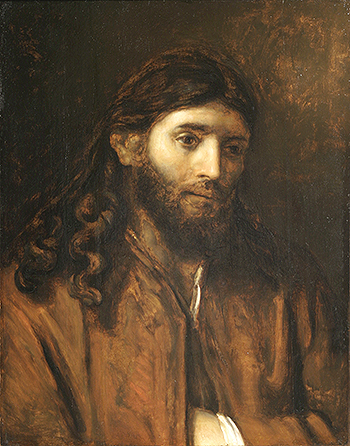BYU Exhibition Celebrates Centuries of Christ-Themed Art
Contributed By Jason Swensen, Church News staff writer

Artwork featured in Brigham Young University’s Museum of Art exhibition Magnify the Lord allows artists and viewers to connect as believers across six centuries.
Article Highlights
- Summer 2016 BYU exhibition will feature 75 original artworks by Rembrandt, Ridolfo Ghirlandalo, Carl Bloch, Ron Richmond, and LDS painter Minerva Teichert.
- Admission to “Magnify the Lord” is free. Visit moa.byu.edu for more information.
Related Links
PROVO, UTAH
“O magnify the Lord with me, and let us exalt his name together” (Psalm 34:3).
For the Christian artist, the Psalmist’s charge to “magnify the Lord” is naturally achieved through paint, brush, chisel, or sculpting tool. The life, teachings, and gospel of Jesus Christ have been taught through paintings and sculptures for centuries.
Indeed, many of the Western world’s most beloved artwork—from da Vinci’s The Last Supper to Michelangelo’s The Last Judgment—have examined Messianic themes. Such depictions of Christ can edify both the artist and those who view the artist’s work.
Christ-themed artwork is a tradition at Brigham Young University’s Museum of Art. It’s been displayed and enjoyed through a variety of exhibitions and shows. The tradition continues at BYU with To Magnify the Lord: Six Centuries of Art and Devotion.
Opening in June, the exhibition will feature 75 original artworks—whose origins stretch back to the 1500s—and include the works of Rembrandt, Ridolfo Ghirlandalo, Carl Bloch, Ron Richmond, and LDS painter Minerva Teichert.
Museum curator Ashlee Whitaker said To Magnify the Lord examines the “poignant and influential role of visual imagery” to encourage devotion to Jesus Christ.
“No other personality or historical figure has inspired the level of artistic output as has Jesus Christ,” she said. “Throughout the centuries, artists have created images that were intended to help viewers, believers, and worshipers come to know the Savior better—whether those images instructed about His life, ministry, and sacrifice; sought to convey His identity as the Son of God; or depicted prophets or saints whose teachings and lives were intended to exemplify the Lord and ideals of discipleship and faithful commitment.”

The Prodigal's Return, 1869, by Sir Edward John Poynter, oil on canvas. Brigham Young University Museum of Art, purchased with funds provided by Ira and Mary Lou Fulton, 2005. Image courtesy of BYU-MOA.

Circle of Rembrandt Harmensz Van Rijn, Head of Christ, 17th century, oil on panel. Brigham Young University Museum of Art, gift of Vivian Hotchkiss Leonis Vicondo, 2004. Image courtesy of BYU-MOA.

William Dyce painted St. John Leading Home His Adopted Mother in 1846. Image courtesy of BYU-MOA.
Many of the works featured in the exhibition will be on public display for the first time—including a painting of Christ by Utah artist James T. Harwood and three pieces recently acquired by the Church-owned school: Edmund Blair Leighton’s The Blind Man at the Pool of Siloam, The Wise and Foolish Virgin by the German artist Julius Wilhelm Louis Rotermund, and Manoah’s Sacrifice by Govaert Flinck, a student of Rembrandt.
Curators hope visitors of all backgrounds can feel a connection of devotion with artists who have lived ages apart.
“My hope is that this exhibition can bring together centuries of religious images in such a way that museum visitors now can feel a sense of a shared and unified desire with followers of Christ throughout the centuries to magnify the Lord, to make Him great in each of our lives and feel increased gratitude for the ‘matchless gift of His divine Son,’” said Sister Whitaker.
The exhibition will be organized in three sections focusing on a different aspect of magnifying the Lord through art.
“To Fulfill All Righteousness” highlights the life of Jesus Christ. “Patterns of Piety” features artwork created for personal and public devotion. And finally, “Word and Witness” presents depictions of the Lord’s messengers and witnesses, the prophets.
Admission to To Magnify the Lord is free of charge. Visit moa.byu.edu for more information.

LDS artist Minerva Teichert's The First Vision (1934) depicts a key moment of the Restoration. Image courtesy of BYU-MOA.

Denial of Peter, 1855, by Ary Scheffer, oil on canvas. Brigham Young University Museum of Art, gift of Donald Greenwood, 1976. Image courtesy of BYU-MOA.

Brigham Young University's Museum of Art will host the Christ-themed exhibition To Magnify the Lord in the summer of 2016. Photo courtesy of BYU-MOA.
